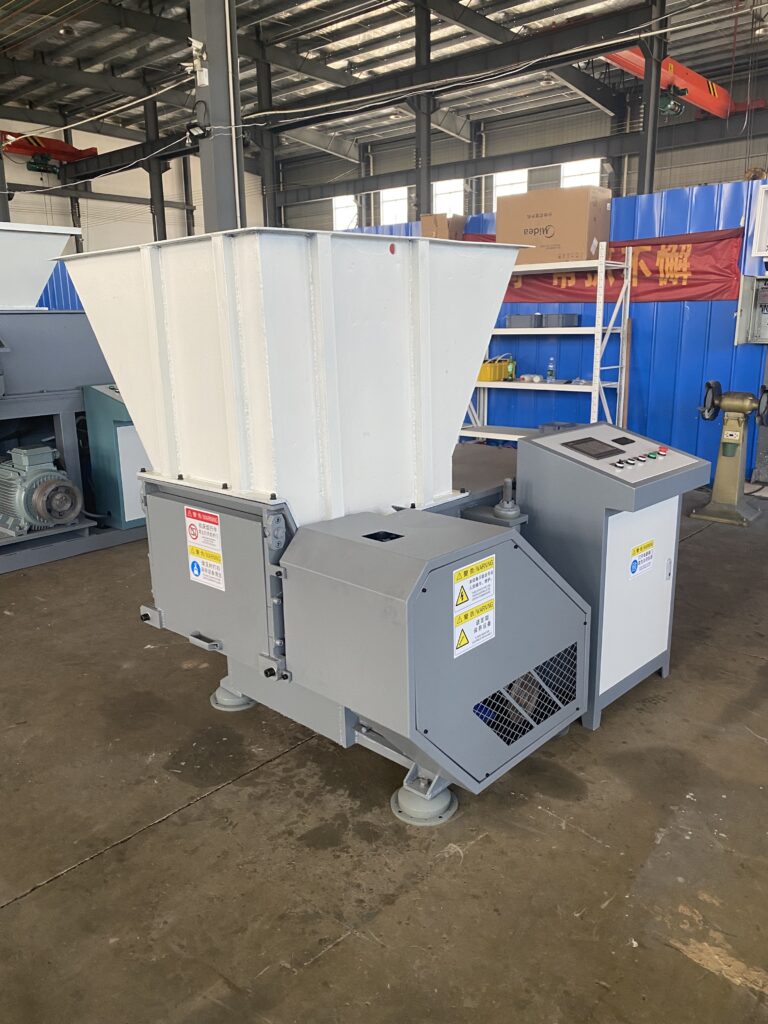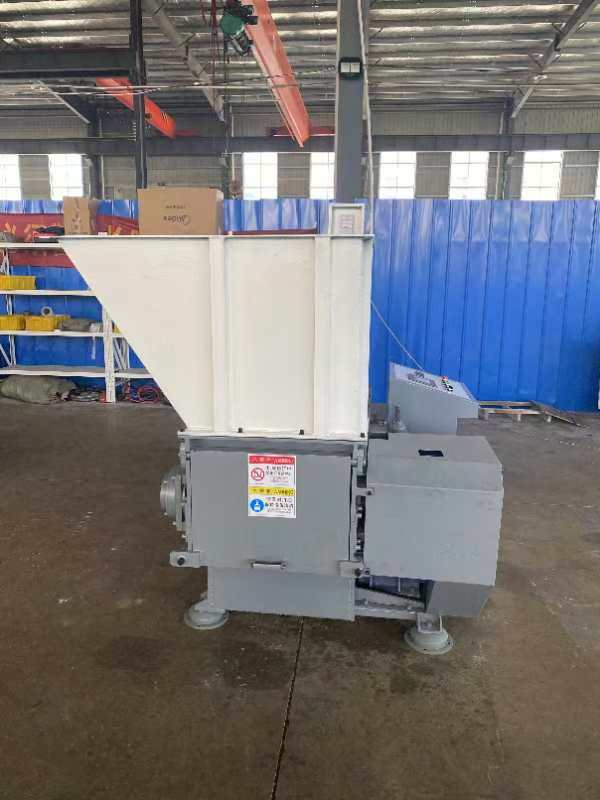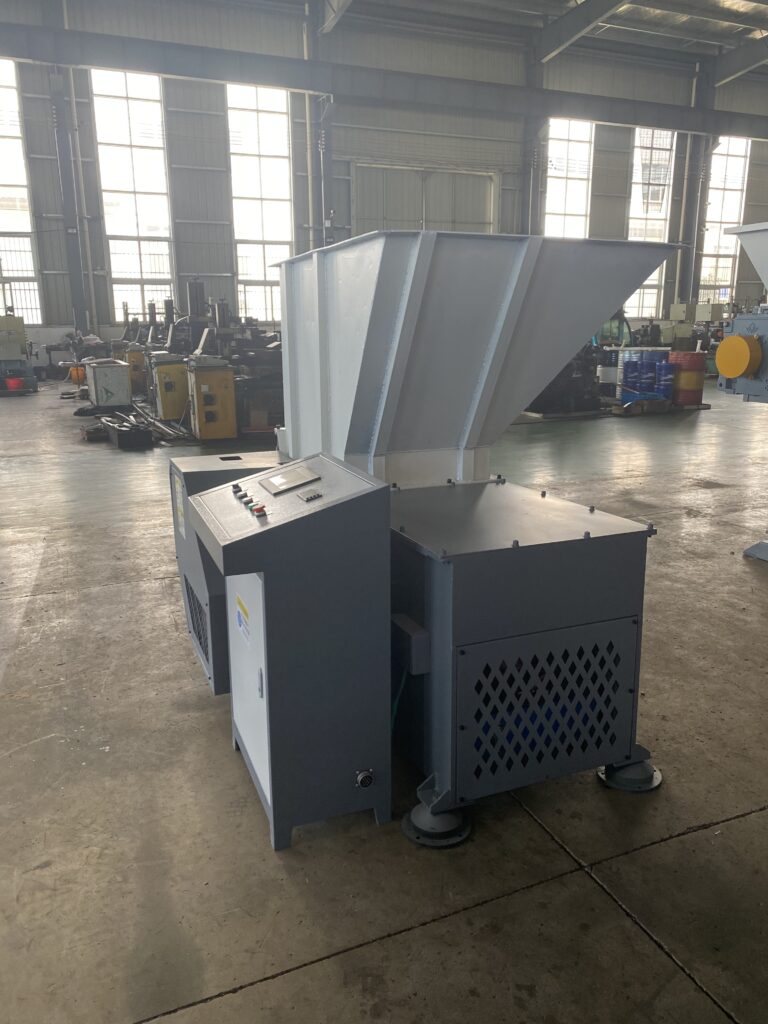What Is a Single Shaft Shredder?

A single shaft shredder is a robust industrial machine designed to reduce large and bulky materials into smaller, more manageable pieces using a single rotating shaft equipped with sharp blades or cutters. This type of shredder operates through a combination of shearing, tearing, and crushing forces, making it highly effective for processing various materials such as plastics, wood, metals, and waste. The machine typically features a hopper for material feeding, a powerful motor-driven shaft with hardened blades, and often includes a screen or grid to control the output size. Single shaft shredders are widely used in recycling, waste management, and industrial applications due to their high torque, low-speed operation, and ability to handle tough materials efficiently. Their versatility allows them to process everything from plastic bottles and wooden pallets to light metal scraps and electronic waste, making them a crucial piece of equipment in modern material recovery and disposal systems. Known for their durability and relatively simple maintenance, single shaft shredders provide a cost-effective solution for businesses looking to optimize waste processing, reduce volume, and prepare materials for further recycling or disposal.
Why Use a Single-Shaft Shredder?

A single-shaft shredder is a highly efficient, cost-effective, and versatile machine widely used in waste processing, recycling, and resource recovery. Its unique design and powerful performance make it an ideal choice for handling various materials, whether plastics, wood, metal, or other solid waste. The primary advantages of using a single-shaft shredder lie in its simple structure, easy maintenance, and stable operation. The single-shaft design utilizes a high-torque rotor and durable blades to achieve strong shearing and shredding, ensuring uniform material breakdown and improving downstream processing efficiency. Additionally, single-shaft shredders excel in processing bulky or high-hardness materials, effectively reducing volume and cutting transportation and storage costs. The machine also features low noise and energy consumption, meeting modern environmental standards, while its modular design allows for blade configuration adjustments to suit diverse industrial needs. Whether in small recycling stations or large-scale waste treatment plants, single-shaft shredders provide reliable solutions, helping users achieve efficient and sustainable waste management.
How to Use a Single-Shaft Shredder?

A single-shaft shredder is a highly efficient and versatile industrial machine widely used in waste processing, recycling, and resource recovery. Proper use of a single-shaft shredder not only improves production efficiency but also extends equipment lifespan and ensures operational safety. Before using the shredder, thorough preparation is essential, including checking whether all components are intact, ensuring the blades are sharp and securely installed, and verifying that the lubrication system is functioning properly to prevent damage caused by excessive friction. Additionally, operators should wear protective gear such as safety gloves, goggles, and earplugs to prevent injuries from flying debris or excessive noise. Before starting the machine, ensure the feeding hopper is free of foreign objects and conduct a trial run according to the manufacturer’s manual to confirm smooth operation without abnormal vibrations or noises. During operation, materials should be fed evenly and in appropriate quantities to avoid overloading or blockages. Different types of materials (such as plastics, wood, or metal) may require adjustments to blade speed or feed rate, so operators must optimize settings based on material characteristics. Throughout the shredding process, continuous monitoring of the machine’s condition is crucial—if abnormal sounds, overheating, or current fluctuations occur, immediately shut down the equipment for inspection and resume only after troubleshooting. Prolonged operation generates heat, so periodic cooling breaks are necessary to prevent motor damage. Routine maintenance is equally important, including regularly cleaning residual materials inside the machine, inspecting blade wear and replacing them when necessary, and ensuring the lubrication system is adequately supplied. Key transmission components (such as bearings and belts) should also be checked periodically to maintain optimal performance. For large or high-hardness materials, pre-shredding is recommended to reduce impact and wear on the blades. After completing the shredding task, stop feeding materials first and allow the machine to fully discharge any remaining fragments before powering off to avoid startup issues in the next session. Finally, keeping detailed records of operational data (such as processing capacity, energy consumption, and malfunctions) helps analyze performance and optimize workflow. By following standardized procedures and proper maintenance, a single-shaft shredder can operate reliably over the long term, providing an efficient waste management solution for industrial applications.
